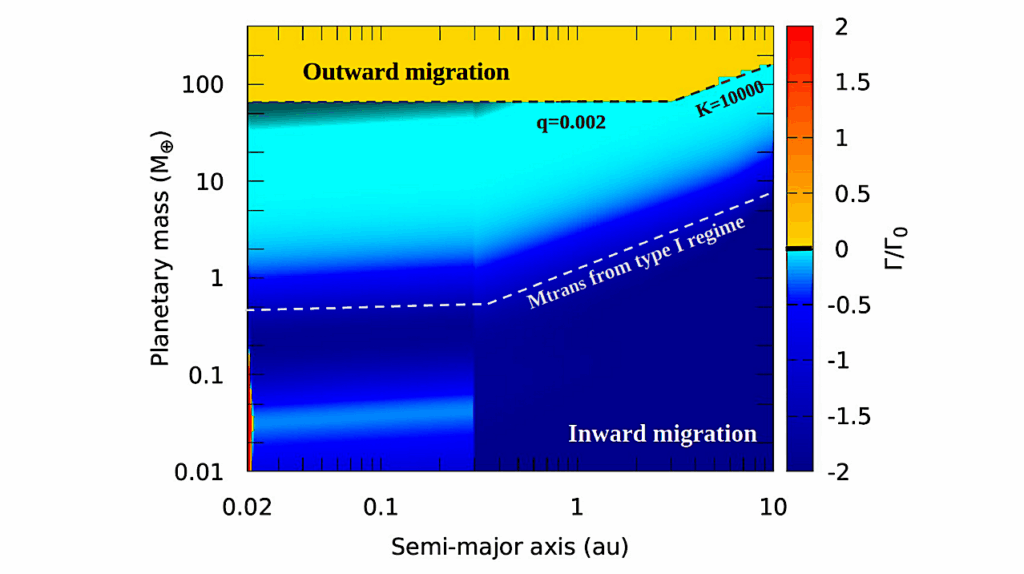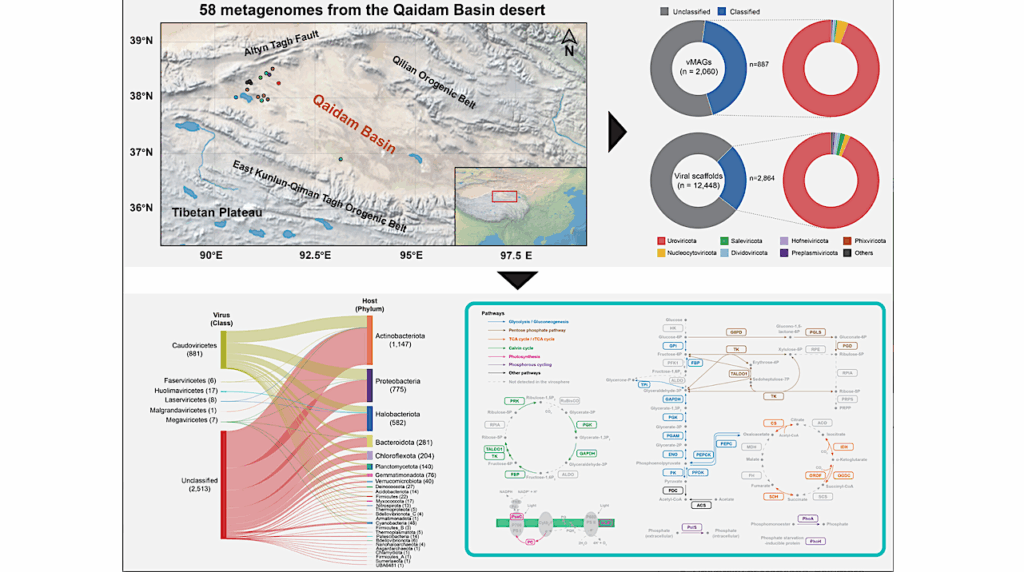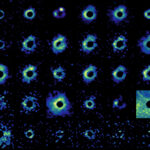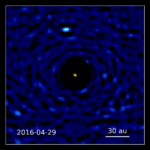Now Reading: Bridging The Atmospheric Circulations Of Hot And Warm Giant Exoplanets
-
01
Bridging The Atmospheric Circulations Of Hot And Warm Giant Exoplanets
Bridging The Atmospheric Circulations Of Hot And Warm Giant Exoplanets
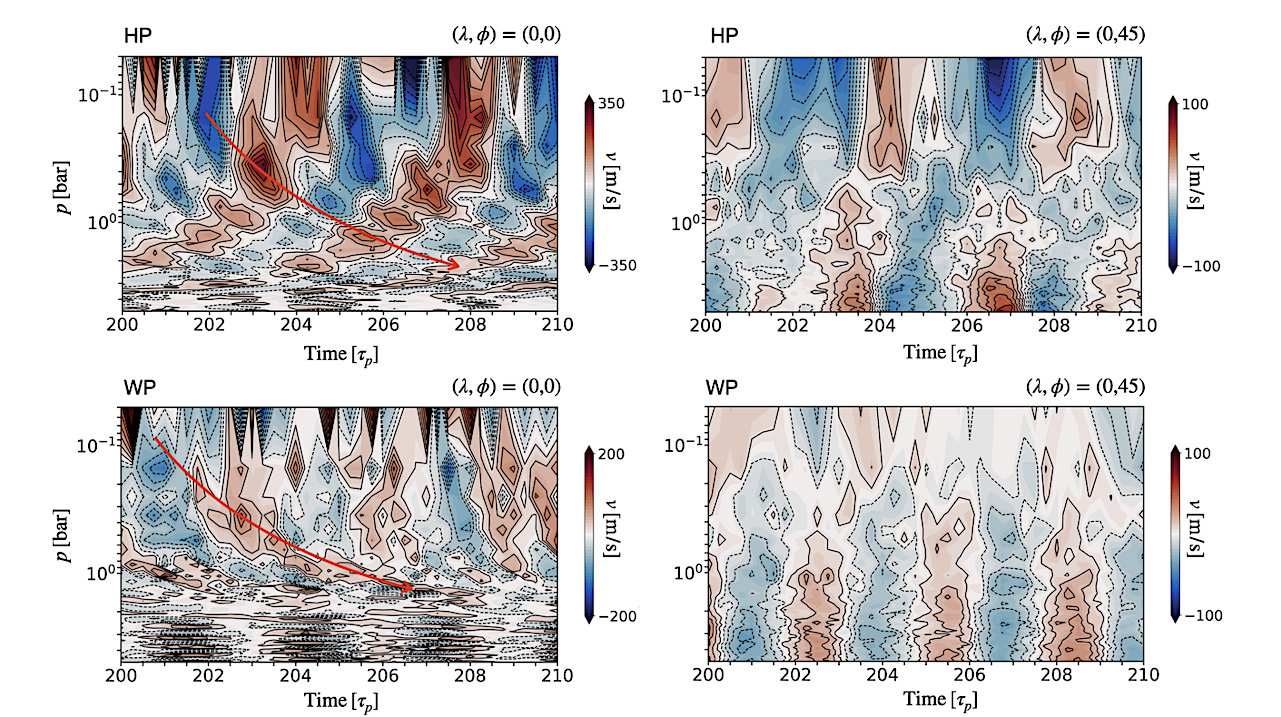

Hovmoller plots showing the time evolution of meridional wind velocity v as a function of pressure for the simulated hot planet (HP) and warm planet (WP) at the substellar point (λ, ϕ) = (0◦, 0◦) (left) and mid-latitudes (λ, ϕ) = (0◦, 45◦) (right) with red and blue colors corresponding to northward and southward flow, respectively. Both planets exhibit oscillations in their equatorial regions with a period of ≲3 τp and a downward propagation in time, as illustrated by red arrows. The HP has higher amplitude and more clear oscillations in v compared to the WP. Rossby waves appear as oscillations in the deep regions of both planets at (λ, ϕ) = (0◦, 45◦). — astro-ph.EP
We perform high-resolution atmospheric flow simulations of hot and warm giant exoplanets that are tidally locked.
The modeled atmospheres are representative of those on KELT-11b and WASP-39b, which possess markedly different equilibrium temperatures but reside in a similar dynamical regime: in this regime, their key dynamical numbers (e.g., Rossby and Froude numbers) are comparable.
Despite their temperature difference, both planets exhibit qualitatively similar atmospheric circulation patterns, which are characterized by turbulent equatorial flows, anticyclonic polar vortices, and large-scale Rossby waves that gives rise to quasi-zonal flows in the extra-tropics (i.e., near ~20 degrees).
Quantitative differences between the KELT-11b and WASP-39b atmospheres reflect their different Rossby deformation scales, which influence the horizontal length scale of wave–vortex interactions and the overall structure of the circulation.

A log(|q(λ, ϕ, p)|), where q is the potential vorticity in units of 10−6 K m2 kg−1 s −1 , and B temperature T(λ, ϕ, p) fields in units of K, at time t = 200 τp for T341L50 simulations of tidally synchronized hot and warm gas giant exoplanets (HP and WP, respectively). Fields are shown for p ∈ {0.15, 0.95, 4.95} bar. These p-levels are near the top, middle, and bottom of the simulation domains. Fields are shown in Mollweide projection, centered on the substellar point (λ, ϕ) = (0◦ , 0◦ ) where λ is the longitude and ϕ is the latitude. White horizontal dashed lines indicate the latitudes ϕ ∈ {0 ◦ , ±30◦ , ±60◦ }, and the white dashed circle indicates the dayside–nightside boundary. — astro-ph.EP
J. W. Skinner, S. Wei
Comments: 10 pages, 5 figures, submitted to APJ
Subjects: Earth and Planetary Astrophysics (astro-ph.EP)
Cite as: arXiv:2505.01397 [astro-ph.EP] (or arXiv:2505.01397v1 [astro-ph.EP] for this version)
https://doi.org/10.48550/arXiv.2505.01397
Focus to learn more
Submission history
From: Jack Skinner
[v1] Fri, 2 May 2025 17:13:42 UTC (8,916 KB)
https://arxiv.org/abs/2505.01397
Astrobiology,
Stay Informed With the Latest & Most Important News
Previous Post
Next Post
-
 012024 in Review: Highlights from NASA in Silicon Valley
012024 in Review: Highlights from NASA in Silicon Valley -
 02Panasonic Leica Summilux DG 15mm f/1.7 ASPH review
02Panasonic Leica Summilux DG 15mm f/1.7 ASPH review -
 03How New NASA, India Earth Satellite NISAR Will See Earth
03How New NASA, India Earth Satellite NISAR Will See Earth -
 04From Polymerization-Enabled Folding and Assembly to Chemical Evolution: Key Processes for Emergence of Functional Polymers in the Origin of Life
04From Polymerization-Enabled Folding and Assembly to Chemical Evolution: Key Processes for Emergence of Functional Polymers in the Origin of Life -
 05And Thus Begins A New Year For Life On Earth
05And Thus Begins A New Year For Life On Earth -
 06Astronomy Activation Ambassadors: A New Era
06Astronomy Activation Ambassadors: A New Era -
07SpaceX launch surge helps set new global launch record in 2024













